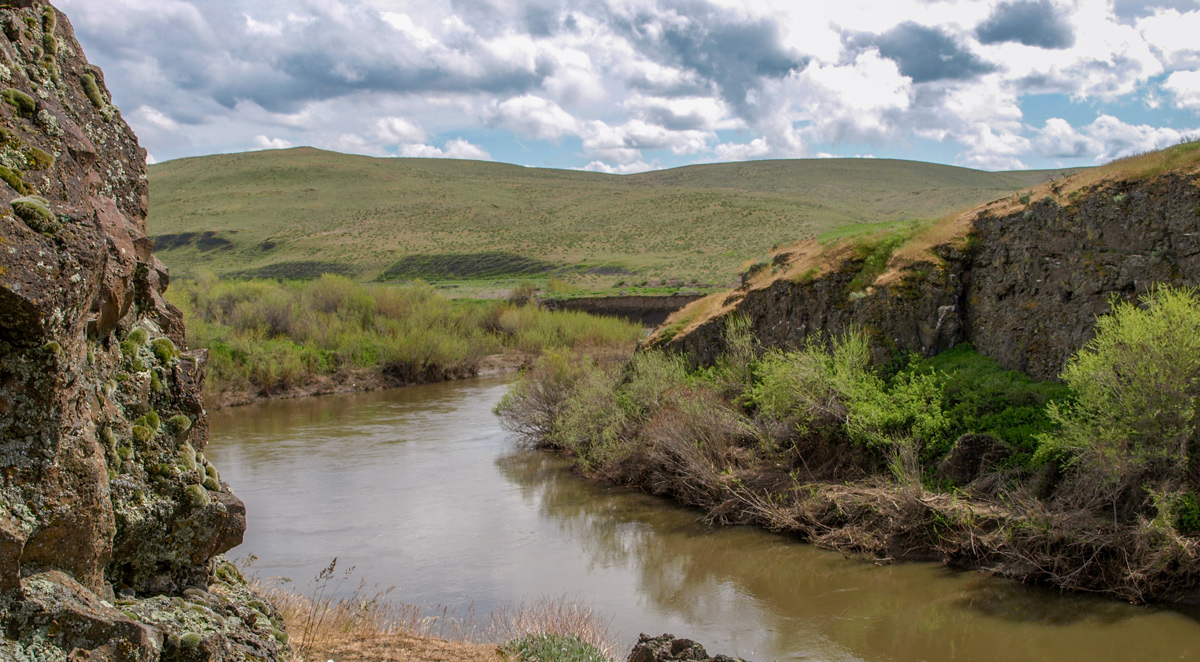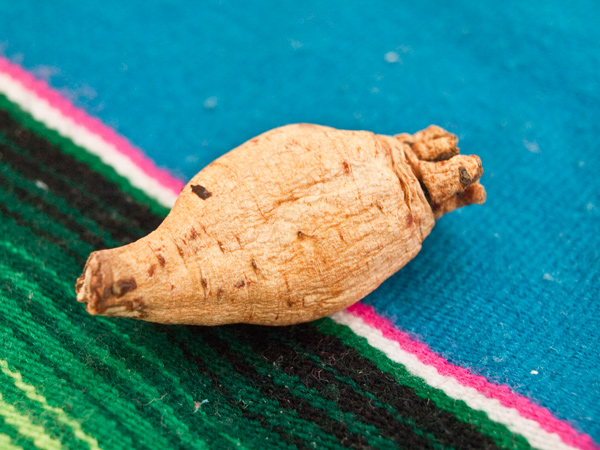Using Chief Yelleppit’s canoes, the men ferry baggage and people across the Columbia River. Lewis gives one of his pistols and two small Indian peace medals in exchange for two horses and Clark treats several Indians for sore eyes. Lewis also prepares a specimen of cous, a staple Indian vegetable. Camp is a short distance up the Walla Walla River.
Crossing the Columbia
we borrowed a canoe from the Indians and crossed over the Columbia to the South Side above the mouth of the river which we took to a byo where we passd. down last fall, and got all our baggage across the river and got up our horses. our guide telling us that it was a long distance to water, & further than we could go this day. So we mooved over 1 mile on the bank of the river which is named the wal-a-wal-a River near a large village of the wal-a-wal-a nation
—John Ordway
Walla Walla River
Walla Walla River (view southeast)
© 2 May 2009 by Kristopher K. Townsend. Permission to use granted under the Creative Commons Attribution-Share Alike 4.0 International license.
this is a handsome stream about 4½ feet deep and 50 yds. wide; it’s bed is composed of gravel principally with some sand and mud; the banks are abrupt but not high, tho’ it does not appear to overflow; the water is clear.
—Meriwether Lewis
Case Pistols for Horses
we gave small medals to two inferior cheifs of this nation and they each presented us a fine horse in return we gave them sundry articles and among others one of my case pistols and several hundred rounds of amunition.
—Meriwether Lewis
Treating Sore Eyes
Several applyed to me to day for medical aides, one a broken arm another inward fever and Several with pains across their loins, and Sore eyes. I administered as well as I could to all. we also gave Some Eye water 1 G. of Ela v V. & 2 grs. of Sacchm Stry.
—William Clark
Another Horse Trade
in the evining a man brought his wife and a horse both up to me. the horse he gave me as a present. and his wife who was verry unwell the effects of violent Coalds was placed before me. I did not think her Case a bad one and gave Such medesine as would keep her body open and raped her in flannel. left Some Simple Medesene to be taken.
—William Clark
Cous Root
Lomatium cous
© 2010 by Kristopher K. Townsend. Permission to use granted under the Creative Commons Attribution-Share Alike 4.0 International license.
Cous Specimen
An umbelliferous plant of the root of which the Wallowallows make a kind of bread. The natives calld it Shappalell. Aprl 29th 1806.
—Meriwether Lewis[1]Moulton, ed. Herbarium, specimen 93.
Weather Diary
State of weather at rise
Wind at rise
State of the weather at 4 P.M. Wind at 4 P.M. River fair after cloudy N W fair N W fallen 1 in. —Meriwether Lewis[2]To assist the reader of this web page, the date column is not presented, the “State of the Columbia River” columns have been merged, and some abbreviations have been spelled out.
Experience the Lewis and Clark Trail
The Lewis and Clark Trail Experience—our sister site at lewisandclark.travel—connects the world to people and places on the Lewis and Clark Trail.
Plan a trip related to April 29, 1806:

Walla Walla River Confluence is a High Potential Historic Site along the Lewis and Clark National Historic Trail managed by the U.S. National Park Service. The confluence is best visited by boat, Madame Dorian memorial Park, and McNary National Wildlife Refuge.




